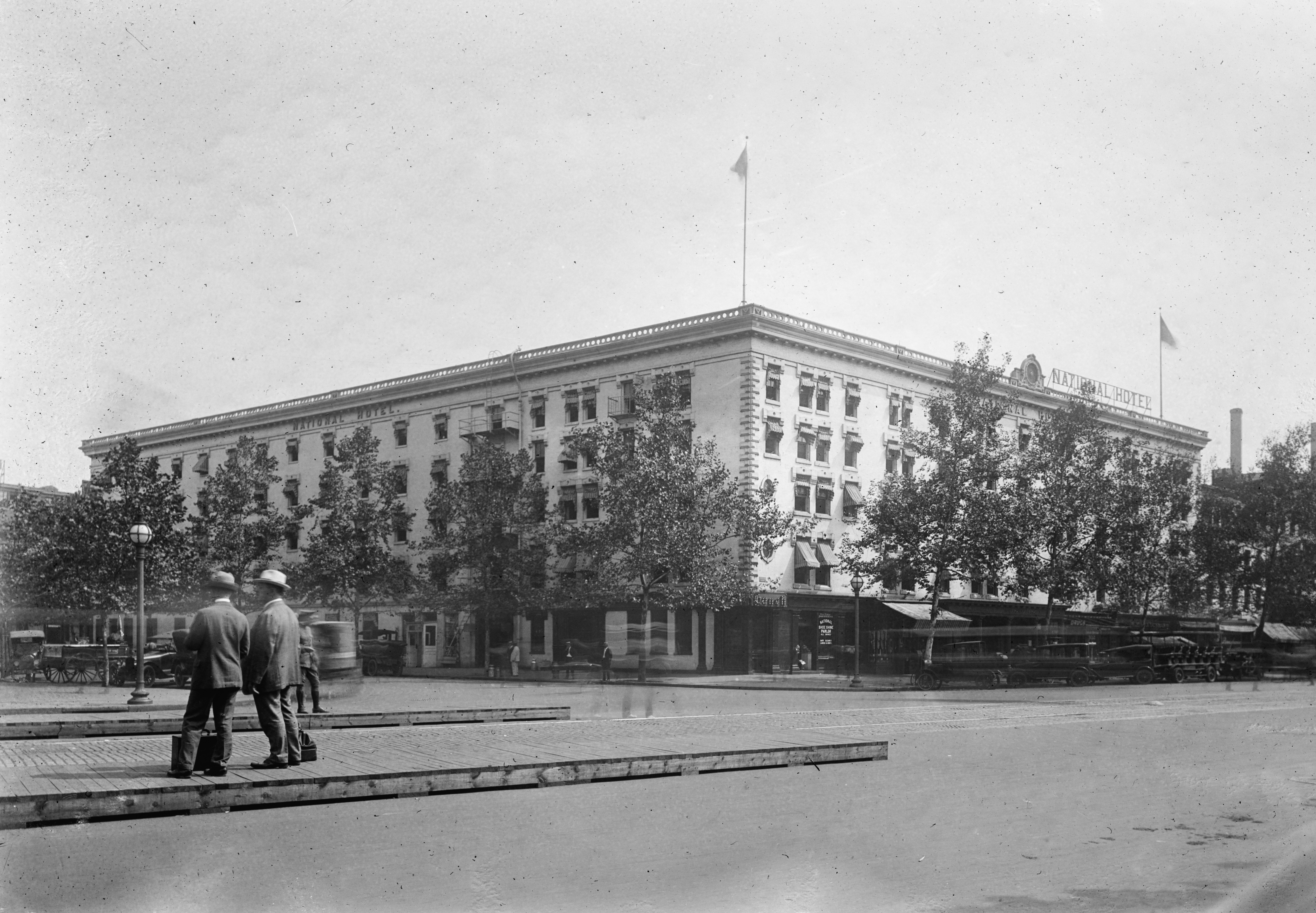"The History of the Nation Was Made There"
In 1865, the most fashionable address in Washington, D.C. was on the corner of Pennsylvania Avenue and 6th Street, NW. There stood the center of Capitol society -- the National Hotel. It had been the hub of Washington's political and social wheel since it opened in 1827. The original owner, John Gadsby, started small. He first built a collection of bungalows around a central courtyard. Then he expanded the building until, by 1857, it stood as an imposing five-story edifice just four blocks from the U.S. Capitol and ten blocks from the White House. |
| The National Hotel |
When the English writer Charles Dickens visited Washington in 1842, he stayed at the National. The great orator Henry Clay, who served as Speaker of the House (on three different occasions), U.S. Senator and Secretary of State, lived at the National for many years. He died there in room 116. Clay's nemesis Andrew Jackson stayed there too, as did President Polk. Abraham Lincoln was also a guest at the hotel and held his inauguration banquet there.
In January of 1857. President-elect James Buchanan checked into the National. During his stay, several of the guests became violently ill. Some of them died. When Buchanan left Washington, the illnesses stopped. He checked back into the National just before his inauguration. Once again, a mysterious illness swept through the hotel. Buchanan heeded the advice of the locals and took his meals elsewhere. After he moved into the White House, the illness again vanished. Was someone trying to poison the new president? No one knows. The cause of the outbreaks was never determined (though a foul sewer opening in one corner of the building was considered a likely culprit).
During the Civil War, the office of the military's official news censor was in the National Hotel. Senator John P. Hale of New Hampshire lived there with his family, including daughter Lucy. In Room 228, Lucy's beau, John Wilkes Booth, plotted to bring down the United States government.
By all accounts, the National served its guest on a grand scale. Its dining room was legendary for sumptuous dinners. The hotel hosted balls, banquets and meetings of all sorts. The Washington Post reported in 1930, “Apart from the Capitol and the White House, there is no building in this city so historic as this. For more than half a century the history of the Nation was made there.” But times change.
By the early 20th Century, the National was having trouble competing with its more contemporary and lavish neighbors, the Raleigh and the Willard. In 1921, fire heavily damaged the National. It never recovered. The District of Columbia government bought the building in 1929, closed it in 1931 and tore it down 11 years later.

No comments:
Post a Comment